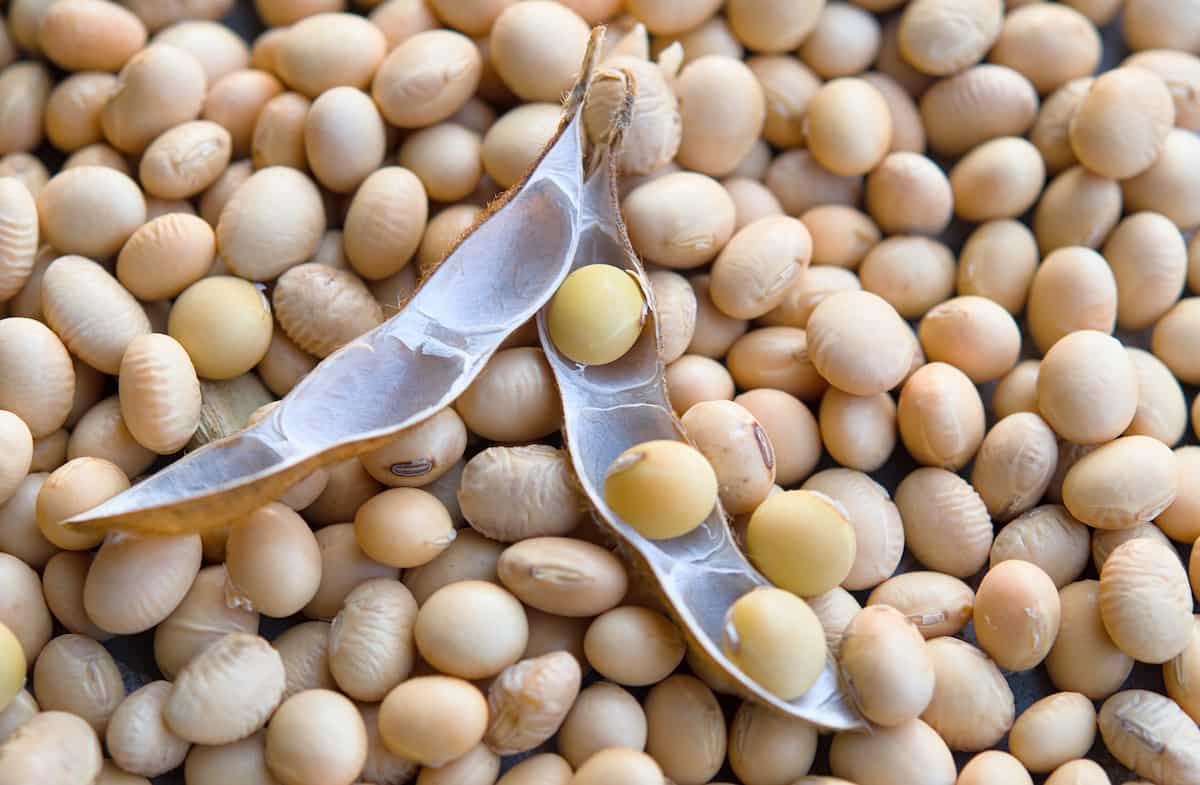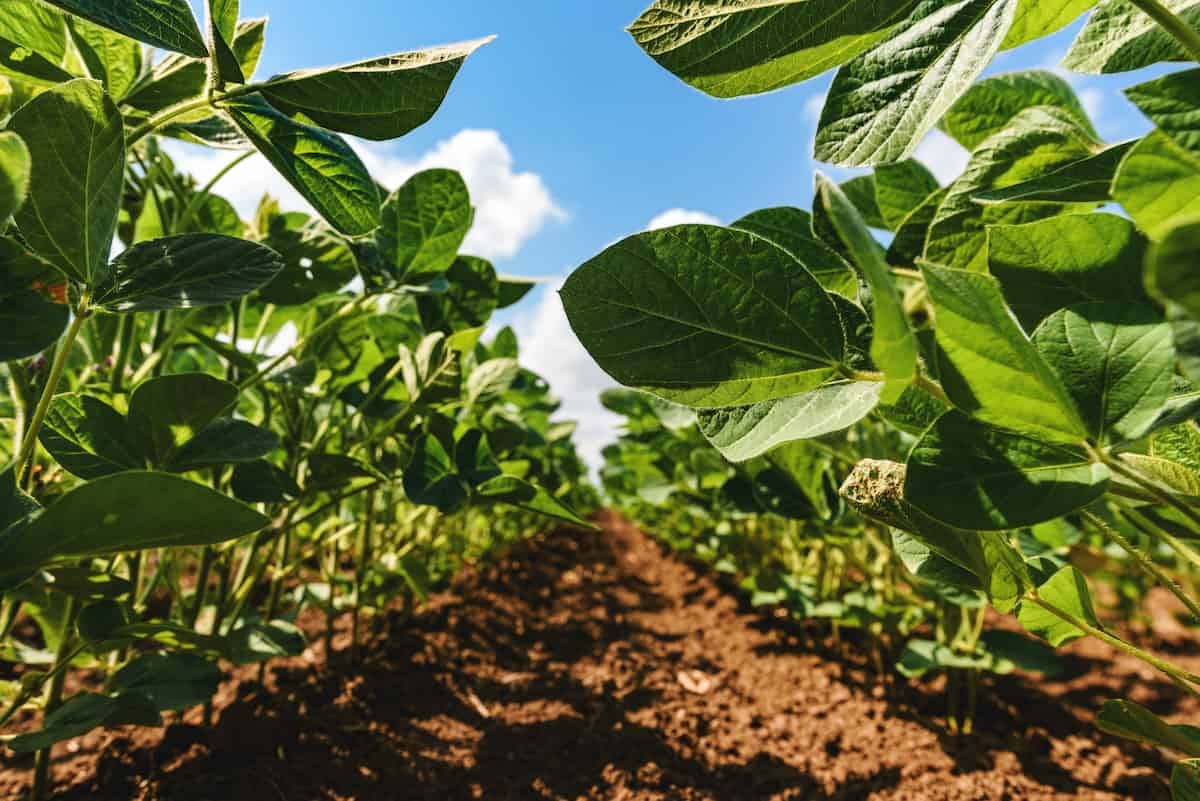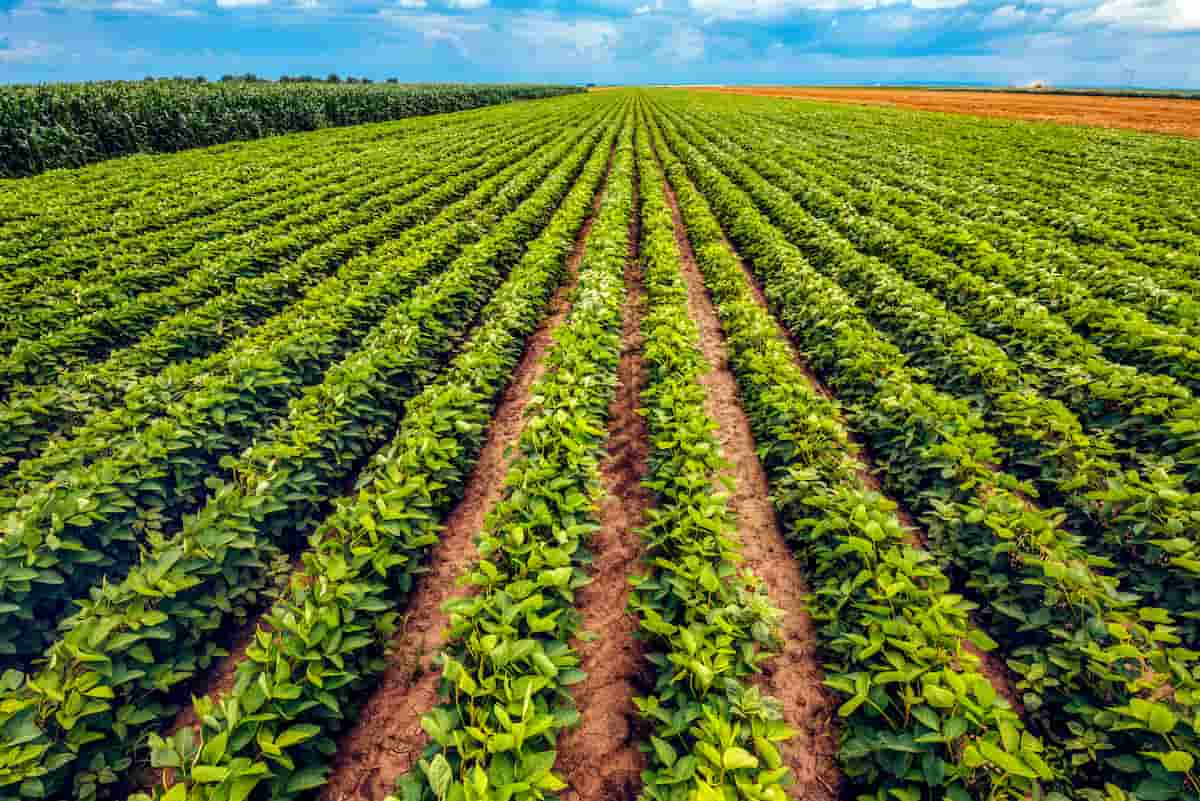Soybean farming is a popular agricultural pursuit in Iowa, offering farmers a lucrative and sustainable crop option. Below we learn about starting your soybean farming journey in Iowa, from soil preparation to harvest, and the best soil type for soybean farming in Iowa.

How to Start Soybean Farming in Iowa
Understanding Soybean Varieties and Climate Requirements
Before starting a soybean farm, it is essential to understand the various soybean varieties and their specific climate requirements. In Iowa, the most common types of soybeans are Group II and Group III varieties. These varieties have a shorter growing season, which makes them suitable for the local climate. Conduct research on the many types available, and choose one that meets the requirements of your farm as well as the environmental circumstances in Iowa.
Soil Preparation
The first step in preparing your land for soybean farming is soil testing. This will help you determine the soil’s nutrient, pH, and organic matter content. Soil tests should ideally be done in the fall, giving you ample time to make necessary amendments before planting.
Soil pH and Nutrient Management: Soil with a pH between 6.0 and 7.0 is ideal for growing soybeans. If your soil’s pH is below this, you may want to consider adding lime to raise it. If the pH is greater than 7.0, however, sulphur may be added to the soil to reduce the alkalinity.
Fertiliser Application: You can determine the appropriate type and amount of fertiliser to apply based on your soil test results. In general, soybeans require nitrogen, phosphorus, and potassium. Using the right combination of these nutrients is essential to promote optimal growth and yield.
Seed Selection and Treatment: Choose high-quality seeds with a proven track record of performance in Iowa’s climate. Consider factors such as disease resistance, maturity group, and yield potential. Treating your seeds with a fungicide and insecticide is also a good idea to protect them from early-season pests and diseases.
Planting and Seeding Rates
The ideal time to plant soybeans in Iowa is between late April and early June. Planting too early can expose the seeds to cold and wet soil conditions while planting too late can reduce yield potential.
Seeding Rates: Iowa’s recommended seeding rate for soybeans is between 140,000 and 160,000 seeds per acre. Planting at the appropriate seeding rate will ensure an adequate stand and minimise plant competition, leading to higher yields.
Row Spacing: In Iowa, soybean farmers typically use row spacings of 15 to 30 inches. Narrower row spacings can help increase yields by allowing plants to capture more sunlight but may also increase the risk of disease.
Weed Management
Effective weed management is crucial for successful soybean farming. Weeds compete with soybean plants for nutrients, water, and sunlight, reducing overall yield. Implementing a combination of mechanical, cultural, and chemical weed control methods will help keep your fields weed-free.
Mechanical Control: Mechanical weed control methods include tillage and cultivation. These methods physically remove weeds from the soil and disrupt their growth. However, excessive tillage can lead to soil erosion and compaction, so striking a balance is essential.
Cultural Control: Cultural weed control methods involve practices that reduce weed growth without using chemicals. Examples include crop rotation, planting cover crops, and managing crop residue.
Chemical Control: Herbicides are an essential tool in soybean weed management. Select the appropriate herbicides for your specific weed problems and follow label instructions for application rates and timing.
In case you missed it: How to Start Corn Farming in Iowa: Ultimate Guide for Maize Soil Preparation to Harvest

Pest and Disease Management
Soybean farming in Iowa faces several pests and diseases that can reduce yields and impact overall plant health. Early identification and management of these threats are crucial for successful soybean farming.
Insect Pests: Common insect pests affecting soybeans in Iowa include soybean aphids, bean leaf beetles, and Japanese beetles. Regular scouting and timely insecticide applications can help control these pests.
Diseases: Soybean diseases in Iowa include soybean cyst nematode, sudden death syndrome, and white mold. Implementing proper crop rotation, planting resistant varieties, and using fungicides when necessary can help manage these diseases.
Irrigation and Water Management
While soybeans are relatively drought-tolerant, adequate moisture is necessary for optimal growth and yield. In Iowa, rainfall is usually sufficient to meet soybean water requirements. However, in cases of extreme drought, supplemental irrigation may be necessary. Efficient water management practices, such as monitoring soil moisture and scheduling irrigation based on crop needs, can help minimise water waste and ensure optimal growth.
Harvesting
The ideal time to harvest soybeans in Iowa is when the moisture content is between 13% and 15%. Harvesting at the correct moisture content will help maximise yield and reduce the risk of damage to the seeds during storage.
Harvest Equipment: Using well-maintained and properly adjusted harvest equipment will help ensure a smooth and efficient harvest. Combine settings should be optimised to minimize seed loss and damage.
Storage and Handling: Proper storage and handling of harvested soybeans are essential to maintain quality and minimize losses. Store soybeans in clean, dry, and well-ventilated storage facilities. Monitor temperature and humidity levels to prevent mold growth and insect infestations.
Crop Rotation and Soil Conservation
Implementing crop rotation is essential for maintaining soil health, reducing pest and disease pressure, and optimising nutrient cycling. Common rotations in Iowa include corn-soybean, corn-soybean-small grain, and corn-soybean-small grain-alfalfa. Diversifying your crop rotation helps minimise soil erosion, improve soil structure, and increase farm productivity.
Monitoring Plant Health and Growth
Regularly monitoring your soybean crop’s health and growth is crucial for early detection of problems and timely intervention. Walk your fields throughout the growing season to scout for pests, diseases, nutrient deficiencies, and other issues that may require immediate action.
Marketing and Selling Your Soybeans
To maximize profits, stay informed about current soybean market trends and prices. Establish relationships with local buyers, such as grain elevators, processors, and livestock producers, to sell your soybeans directly or through marketing contracts.
In case you missed it: Ultimate Guide to Start an Organic Vertical Vegetable Garden: Creating from Scratch for Planting to Harvest

Conclusion
Soybean farming in Iowa can be a profitable and rewarding agricultural pursuit with proper planning, preparation, and management. Following this comprehensive guide, you can establish a successful soybean farming operation and contribute to Iowa’s thriving agricultural industry.
- Feed Your Flock for Less: Top 10 Tips to Save on Chicken Feed
- Ultimate Guide to Ossabaw Island Hog: Breeding, Raising, Diet, and Care
- Hatching Answers: The Top 10 Reasons Your Chickens Aren’t Laying Eggs
- Eggs and Economics: Breaking Down the Cost of Raising Backyard Chickens
- Defend Your Greens: Proven Methods to Keep Iguanas Out of Your Garden
- Ultimate Guide to Cinnamon Queen Chicken: A Comprehensive Guide for Beginners
- Ultimate Guide to California Tan Chicken: Breeding, Raising, Diet, Egg-Production and Care
- Ultimate Guide to Marsh Daisy Chicken: Breeding, Raising, Diet, and Care
- 10 Types of Chicken Farming Businesses You Can Start for Profits